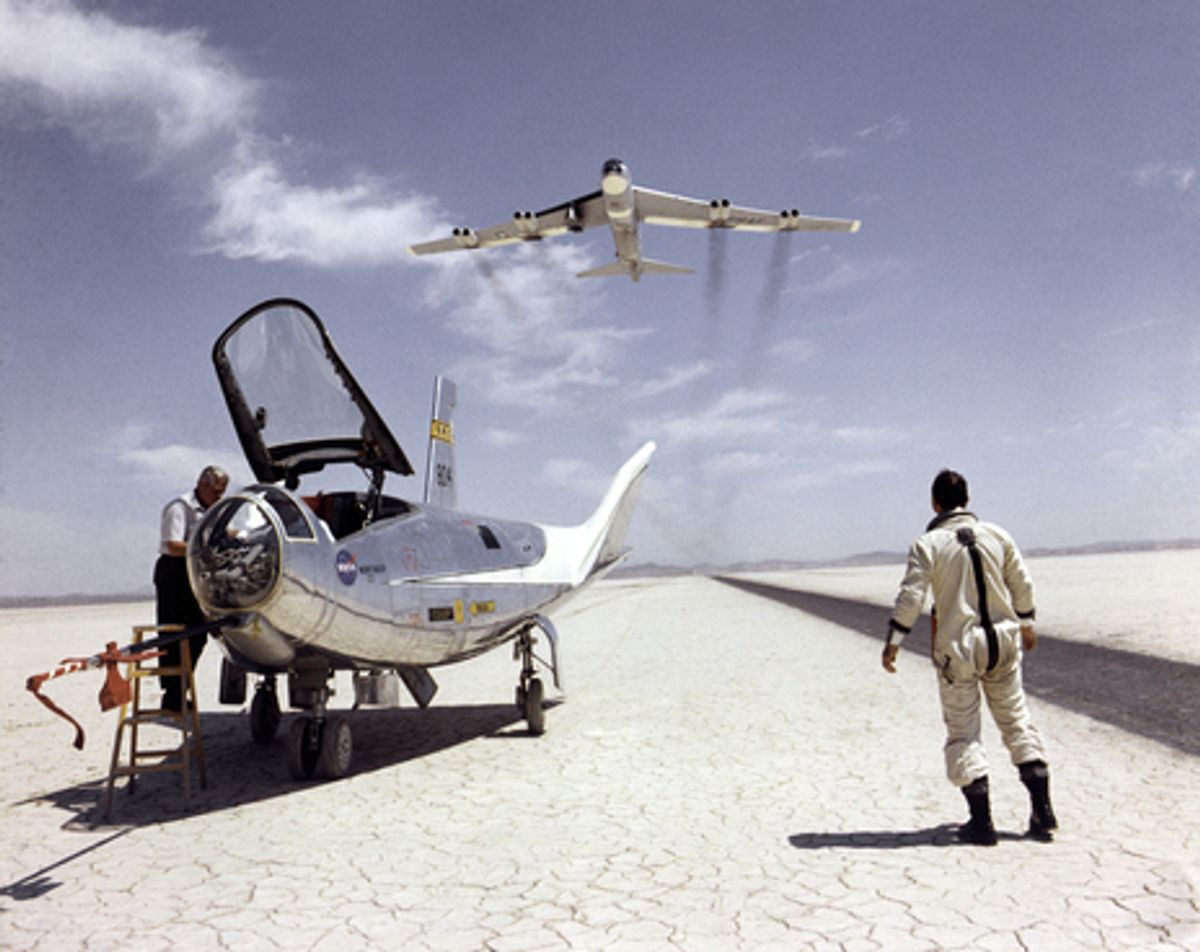While Southern California nowadays conjures images of Hollywood, in the mid-20th century, it was the aerospace capital of the world. Not only did it propel U.S. military might, spaceflight, and commercial aviation, but it also revamped seemingly unrelated industries, like surfing, architecture, and animation.
That history might have faded were it not for the efforts of co-curators Matthew Hersch and Peter Westwick, who—under the auspices of The Huntington Library and University of Southern California, and armed with a US $367 000 grant from the National Science Foundation—have spent the past three years compiling manuscripts, documents, more than 50 oral histories, and thousands of photos.
The result is the Aerospace History Project, an archive, research, and educational enterprise that explores the events, personalities, and technological innovations affecting and emerging from the SoCal aerospace industry, and how they shaped the local culture and, ultimately, the world.

The tip of that archival iceberg is featured in
Blue Sky Metropolis: The Aerospace Century in Southern California, a three-month exhibition at The Huntington Library, Art Collections, and Botanical Gardens in San Marino, California. A book of the same name will be published next year. The exhibit, which runs through January 9, features photos, rocket engine, and early satellite models, and a timeline of local aviation events from the first American Air Meet in 1910, through the emergence of the Space Age, to the industry consolidation of the early 1990s.
Clement weather, dry lake beds, local university engineering talent and research facilities, and a pioneering spirit made the area a perfect incubator for aviation experimentation. Impetus from World War II, the Space Race, and the Cold War turned it into an industrial giant. During its World War II heyday, single plants employed as many as 100 000 people—including teams of number-crunching, mainly female, “human computers”—working round-the-clock shifts manufacturing tens of thousands of airplanes.

“The Cold War and advent of the computer provided the greatest technological innovation in human history,” says Matt Hersch, a lecturer in science, technology and society at the University of Pennsylvania in Philadelphia. “We tried to bring out what goes into designing the aircraft, the engineers having to solve incredibly difficult problems, and document the characters of that time. That era created our image of the nerd. But in fact, many of them were richly engaged renaissance people who were changing the way Californians played and lived.”

Much of that technology innovated surfboards (which adapted wing aerodynamics and materials), hot-rodding, architecture, design, and animation. “Computer animation came out of aerospace, specifically algorithms developed at the Jet Propulsion Laboratory for the Voyager spacecraft,” says Westwick, an assistant research professor of history at the University of Southern California in Los Angeles. “Many of these computer engineers would go on to work for [
Star Trek creator] Gene Roddenberry, George Lucas, and Disney Animation.”

Photos tried to impart that sense of fun—California Institute of Technology physicist Albert Hibbs, who helped popularize science on TV in the 1960s, flipping butter at a colleague; Mariner 5 mission control scientists in 1967 wearing Vulcan ears; and Wiley Post, in the first pressurized flight suit, which enabled him to ascend 16 764 meters (55 000 feet) into the stratosphere, where he discovered the jet stream that would later facilitate transcontinental flight. (It also scared residents, during a forced landing, who mistook him for a space alien.)
Despite more recent industry layoffs and consolidations, “Southern California still has a vibrant aerospace industry,” says Westwick. ”There’s a lot of research going on with pilotless aircraft [at Edwards Air Force Base]. Then there’s Elon Musk’s Space X [in Hawthorne] and Burt Rutan’s Scaled Composites [in Mojave]. We’re still looking for connections between the current aerospace industry here and the broader social context.“







